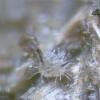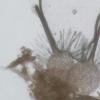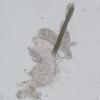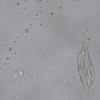
11-01-2026 20:35
Hello.A very tiny pyrenomycete sprouting sparsely

09-01-2026 17:41
Arnold BüschlenHallo, F. dilatata wird von vielen Bryoparasiten

10-01-2026 20:00
Tom SchrierHi all,We found picnidia on Protoparmeliopsis mur

07-01-2026 22:22
 Danny Newman
Danny Newman
Tatraea sp. on indet. hardwood The Swag, Great Sm

10-01-2026 01:18
 Danny Newman
Danny Newman
cf. Neovaginatispora fuckelii on indet. shrub Pre

07-01-2026 10:24
 Danny Newman
Danny Newman
Pezicula sp. on indet. hardwood Appalachian Highl

09-01-2026 10:08
 Blasco Rafael
Blasco Rafael
Hola, en el mismo habitat que la anteriorRetamaDia

08-01-2026 21:22
 Blasco Rafael
Blasco Rafael
Hola, He recogido esta muestra de Orbilia sobre Re

07-01-2026 17:29
 Marc Detollenaere
Marc Detollenaere
Dear Forum,On a barkless Populus I found some smal

10-11-2021 17:33
 Riet van Oosten
Riet van Oosten
Add-on topic http://www.ascofrance.com/forum/7059
 Found on horse dung.
Found on horse dung.Not directly recognized as a Pyxidiophora species.
Only not able to determine what kind of Pyxidiophora this is, so I asked David Malloch who studied Pyxidiophora species for his opinion
Perithecia: rounded 149-178 um in diameter, with a dark brown neck 274-285x8.0-10.0 um wide, at the base 15.0-16.0 um wide and the top 10.5-11.5 um wide.
Peridium: membranaceous, semi-transparent, with large angular outer cells not covering the whole perithecium.
Hairs: hyaline, septated 75-79 um long 1.75-2.2 um wide, at the base 3.5-4.2 um wide with a rounded top.
Paraphyses: lacking
Ascus: unitunicate, number of spores unknown, 51.0x16.2 um.
Spore: 33.5x5.5 um.
The following is the response from David Malloch:
Your collection has smaller ascospores than most described species of Pyxidiophora. My first guess was Pyxidiophora microspora (Hawksworth & Webster) Lundqvist but that species was not described with stiff hairs on the perithecium. As Lundqvist said, Mycorhynchus brunneocapitatus Hawksworth and Webster may be the same thing but with slightly more mature ascospores. I have attached the Hawksworth and Webster paper where these two species were described.
Meredith Blackwell and I also discussed another species that has small spores. We were unable to identify it and found that the literature on most species, including P. microspora, was too incomplete to allow a positive identification. I have also attached that paper.
In New Brunswick we sometimes get another species with small spores that consistently grows on seaweed washed up on the beach. We have called that one P. lilliputiana but have not published the name. The perithecia lack stiff hairs like yours.
As we discovered in our work, Pyxidiophora species have very complex life cycles involving two hosts, a fungus and a mite, and often several spore types. The available literature on this genus is not detailed enough to compare collections. As we say in English, we have "thrown in the towel" and have abandoned all efforts to name species of Pyxidiophora.
Regards,
David




